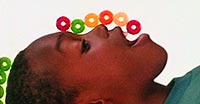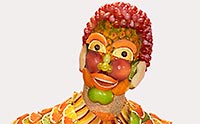Making Mall Mania
Since the late 70's, one of my favorite creative pastimes has been making time-lapse movies. While the technique is used to accelerate the movement of all sorts of things, my main fascination was with filming people and viewing the sped-up patterns of interaction that occur in crowded situations. Choosing the right sort of location to film time-lapse was key, and it occurred to me that shopping malls, with the social behavior that took place there, would make fantastic subject matter. Accordingly, in 1989, I started to shoot my mall movie using basically no budget, a condition that came with my status as a "starving artist". Out of necessity, the project required guerrilla filmmaking tactics.
Almost immediately, I encountered the main obstacle to creating my movie. That was the threat of being kicked out of the mall by security guards for actively photographing without authorization. The challenge was to film at least a few time-lapse shots before being discovered because a mall cop would eventually notice and escort me out of the building. For that reason, I regularly moved from one mall to another throughout the Los Angeles vicinity. Since I shot the movie in the 16mm format with my Bolex camera, which was of considerable size and impossible to hide, there was no way to be covert about what I was doing. I would choose a shooting angle, set up my tripod and camera, and try to act natural while filming away at 2 frames per second. The camera was visibly in plain site but as long as I looked in a different direction, the general public (unlike security) would not take notice. A beneficial side effect of being forced to film at different malls was the opportunity for architectural variety. The locations included the Glendale Galleria, Westside Pavilion, Sherman Oaks Galleria, South Bay Mall, and Fox Hills Mall. After a while, my initial enthusiasm for the project waned. I grew weary of the shooting hassles and became concerned about the considerable post-production costs that would be required to finish the movie. Ultimately, I abandoned the project and the film sat in storage like a time capsule waiting for some future resurrection.

Many years later, digital moviemaking became a reality. In 2007, I decided to revive Mall Mania and finish it digitally with whatever shots I had available to use. I transferred the film footage to the DV format. From there, editing and post-production became easy and inexpensive compared to the analog methods of the past. I barely had enough material to complete the movie, but once I synced the shots to a "period" electronic soundtrack by Bjorn Lynne, it came out great. After I released it on Vimeo.com, Mall Mania gained a lot of attention. People responded to the movie in a way that I would never have expected when I first shot it. For modern viewers, it was a nostalgic window to days gone by. The charm of the movie was not so much the time-lapse technique but rather the display of former fashions, hairstyles, and fads, now immortalized for all to enjoy.







































